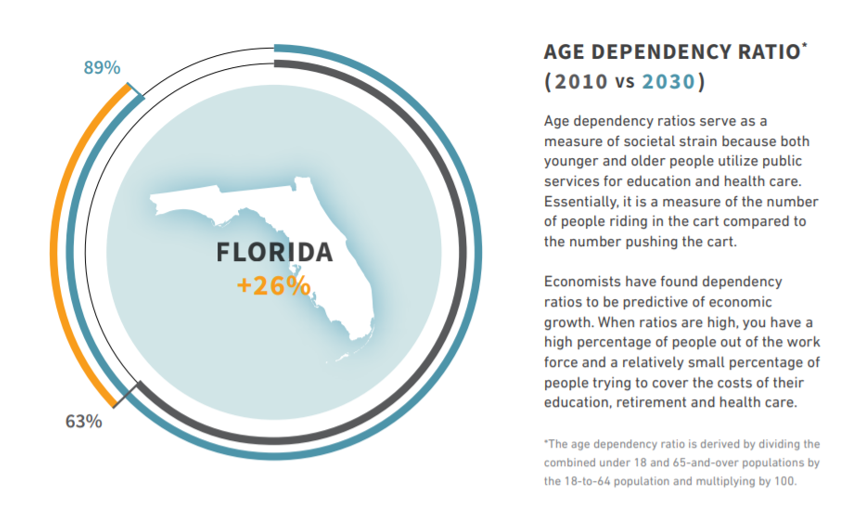 Back in 2015, I did a study on age-dependency ratios and the takeaway was simple: The status-quo is not an option.
Back in 2015, I did a study on age-dependency ratios and the takeaway was simple: The status-quo is not an option.
The ratio, created by demographers, is based upon the fact that at any given point in time, society has people both too young and too old to be working and paying taxes. As a society, we invest funds in the hope of educating our youth, and we invest public funds to look after the health and retirement needs of the elderly. Members of the working-age population are the ones paying for most of this at any given time.

Lots of working-age people and relatively few young/old, easy. Lots of old/young and few working age people, difficult. Life is getting more difficult by the day, and COVID-19 kicked off an already sure-to-be-challenging decade with additional difficulties. The need for innovation has only increased.
America in the late 20th and early 21st centuries enjoyed the benefit of having a large Baby Boom generation with members in their prime working years. This created strong economic growth that financed increased youth education and elderly benefits simultaneously.
These days, however, with approximately 10,000 Boomers reaching the age of 65 per day, we soon will reach the point where half the generation will be that age, and by 2030, all surviving Baby Boomers will be 65 or older. This is going to get interesting, especially in retirement destination states like Arizona and Florida.
The math on age-dependency ratios is straightforward: Add your under-18 population to your 65-and-older population and then divide by your 18- to 64-year-old population. If you think of this in terms of how many people are riding in society’s cart and how many are pushing it, Florida’s age-dependency ratio in 2010 was 63 riding in the cart for every 100 pushing it. Census Bureau projections for 2030 have the number riding in the cart to 89.
The Florida Office of Economic and Demographic Research, foreseeing less migration to Florida and lower birth rates, has projected the age-dependency ratio will “only” move to 78 by 2030. Either way, the cart is going to get a lot harder to push.
So, the current decade always was going to be challenging, even before the appearance of the COVID-19 global pandemic. It’s hard to say just how much worse the pandemic has made things, but the long-term damage could be considerable.
An implicit assumption of the age-dependency ratio is that your working age population is, well, working. If not, you can effectively move them from pushing the cart to riding in it. The world of 2030 and beyond will not easily grant a “do over” to 20-somethings who missed their literacy acquisition window during a pandemic.
Despite the scale of the unfolding challenge, Americans are delightfully inventive and capable of rising to challenges. North Las Vegas Mayor John Lee, for instance, recently described a bold new initiative to deliver digital learning and custodial care to students in his city:
On Monday, in partnership with Clark County, the city of North Las Vegas launched the Southern Nevada Urban Micro Academy, which is providing badly needed education options and support in our city. Children who otherwise likely would be given a jar of peanut butter and told not to answer the door while their parents work and CCSD remains virtual instead are attending in-person homeschool co-op learning sessions, receiving live tutoring and participating in enriching, fun activities in a safe, socially distant environment at a cost of just $2 per day.
This in-person learning will support proven online home-school curricula that allow children to progress at their own pace while still meeting — and in many cases exceeding — Nevada Academic Content Standards.
It is unclear just how many American children have functionally been given a jar of peanut butter and unsupervised remote learning during 2020. Too many, one suspects, and the implications of this will only begin to become clear over the course of many years.
Is the North Las Vegas model a solution? We won’t know until we try it, but I’m willing to go all in that it beats the peanut butter method. Bravo to Mayor Lee for stepping up to the plate with an innovative solution. We will need much more of this sort of can-do spirit during the decade ahead.


